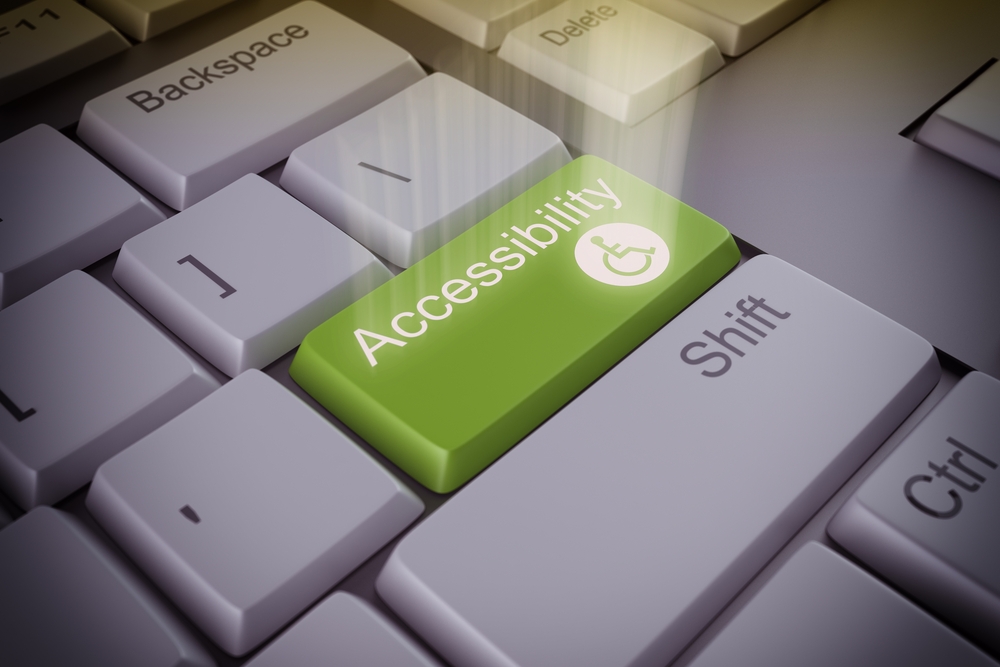
Website Accessibility
When enhancing accessibility in your business, it is important to think about both physical and digital worlds. Your business follows ADA guidelines to create accessible sidewalks and public spaces for those with disabilities that limit mobility, and similar guidelines exist for digital content to serve individuals with vision and hearing impairments. This post will take you through those guidelines and what steps you can take to meet them.
What Is Web Accessibility?
Web accessibility refers to inclusivity in the design and development of websites and Internet applications so that people with disabilities are equally able to access information available online. In the same way that ramps help individuals with mobility challenges, web accessibility standards allow those with vision or hearing impairments to get easy and complete access to a company’s presence on the Web.
Web Content Accessibility Guidelines
To help web developers and companies understand how to make their web content available and accessible to all, the Web Content Accessibility Guidelines (WCAG) were published in 2008.
In the United States, the implementation of the WCAG (an international standard) takes place in Section 508 of the Rehabilitation Act of 1973, often referred to as just “Section 508” in legal and business practices. In January 2017, the U.S. Congress approved the adoption of all of the elements of the WCAG into Section 508 as an official U.S. law. More recently, the guidelines were updated in June 2018 with more details on accessibility for web content, referring to text, images, and markups.
The WCAG measures web accessibility by four testable principles:
- Perceivable – web content must be able to be perceived through a user’s senses
- Operable – web content elements can be interacted with via mouse, keyboard, or voice command, and not designed in ways that could cause seizures
- Understandable – users need to be able to understand the content
- Robust – developed content with appropriate markups that can work reliably well and across different browsers
Website Accessibility Examples
Able-bodied individuals are often unable to recognize the difficulties that others may face. Websites need to be accessible for everyone, whether a sight impaired, color blind, hearing impaired, or dyslexic. Here are a few examples of how websites can be more inclusive for every user.
Text-to-Speech Capabilities
Websites outfitted with HTML and text equivalents for images and links allow text-to-speech software to easily interact with the information. Therefore, users who are visually impaired can receive the website content with more accuracy.
Easy-to-Read and Large Fonts and Images
Some fonts are difficult to read. Fonts should be streamlined and large enough to be read by people with impaired vision. The American Foundation for The Blind suggests a minimum of a 16 pt font size to accommodate users with vision impairments, but be sure to check that the font will resize correctly when the user tries to do so on their browser.
Underlined Links
Some websites only differentiate words that are web links by using a hyperlinked color followed by the rest of the body text. Type color selection is important as certain color choices can make links difficult for some people to see. One easy strategy to resolve this is to make sure linked items include an underline so that everyone can identify available links. In addition to an underline, some sites use a small icon (often an arrow) to denote an external link.
Navigable Content
Some users may not be able to control a mouse with precision or they may only navigate web content with a keyboard, special tracking device, or a single-switch access device. Website content needs to provide clickable links that are large enough to easily navigate.
Captioned Videos
For users who are deaf or hard-of-hearing, closed captions or a video with sign language ensures that these users can benefit from the information in a video. Videos are a great tool for websites and companies, and captions make them more inclusive.
Easy Reading Levels
Content should be written in plain language. Users who deal with dyslexia or other disabilities will be able to understand website content when it’s written plainly. Descriptive images can also help to enhance understanding for users.
The U.S. General Services Administration has created an excellent resource website that can help you explore the topic of website accessibility and answer all the questions you may have. You can find the site at the easy-to-remember location, accessibility.gov.
To ensure website accessibility, take the time to consider all the users that will be visiting your website. Website accessibility means creating a web that allows information to be available to every user. At StrongGo, we believe in establishing a more accessible physical world, and that includes creating an accessible digital world, too.


